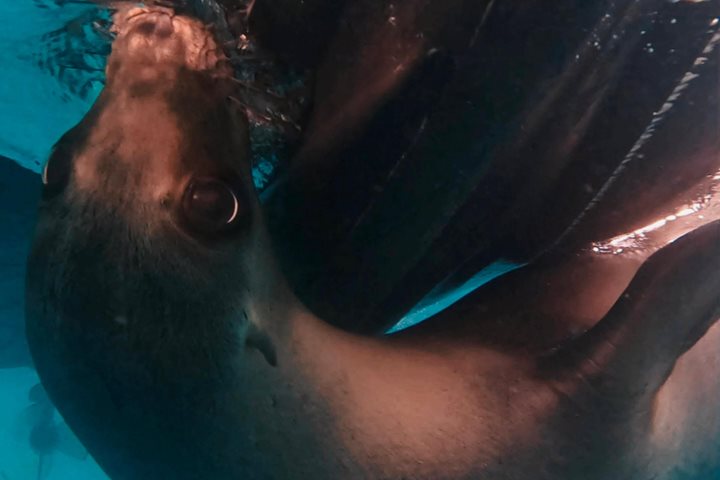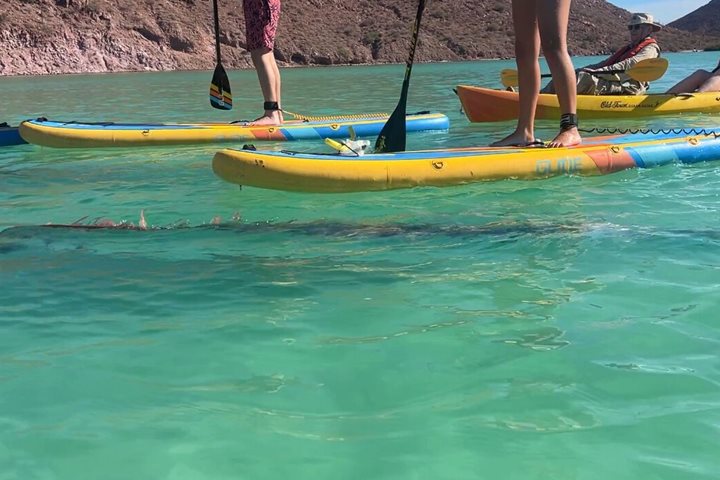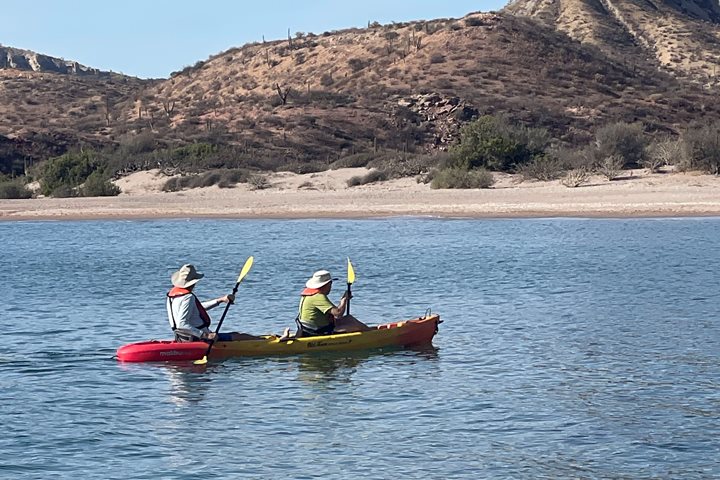Baja California has a special kind of magic. It can be subtle, but there is always something different and exciting to see if only you take the time to look for it. Today was no exception to this rule, as we woke up in the National Marine Park of the Bay of Loreto to enjoy a truly spectacular sunrise. Exploring the ocean around the northernmost area of our expedition, there were constant sightings of leaping mobula rays, diving pelicans, and gliding frigatebirds.
After a morning of ship cruising – and trying out some snorkeling equipment – we ventured to shore for our first true exploration of the Baja California peninsula. Anchored within Bahia Agua Verde, the National Geographic Venture lowered zodiacs, kayaks, and stand-up paddleboards in the water. On shore, naturalists led explorations through arroyos – dried-out riverbeds that will fill with water during flash floods – for our first introduction into the fascinating assortment of plant life found here. Although we are in a desert, Baja California does have a Mediterranean climate that can provide hydration for an amazingly lush landscape in the wetter winter season.
Another group chose instead to explore the tidal pools exposed in the rocky coastline. Here, incredible discoveries were made of creatures normally found in less accessible water; reef fish that had been swept into these pools on large waves are trapped for hours until a high tide can provide enough water for them to swim down to their normal rocky underwater habitats. Naturalist Katy Mills-Orcutt showed anyone nearby an incredible mollusk known as a sea hare – named for “ear”-shaped folds of mantle, these giant sea slugs are more closely related to bivalves like clams than the terrestrial slugs they strongly resemble.
Those water vessels that were brought to the beach by the deck team of National Geographic Venture were extremely popular in the afternoon sun. Guests paddled in kayaks and stand-up paddleboards along the coastline, looking for schools of baitfish or flashes of color in the rocky reefs below. Gulls, pelicans, boobies, and turkey vultures soared overhead with hopes of catching a bite to eat of some of those tasty fishes. All had a “truly, completely satisfactory day,” and we cannot wait to continue our explorations of the Vermillion Sea tomorrow.







